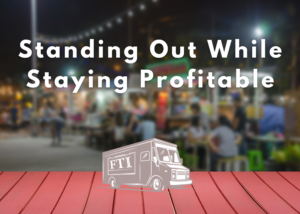
Standing Out While Staying Profitable
Striking the balance between serving profitable crowd pleasers and standing out from the crowd is what sets a moderately successful food truck from a very

Starting a food truck business is an exciting venture that combines culinary passion with entrepreneurial ambition. Whether you’re dreaming of serving gourmet tacos at local festivals or introducing artisanal desserts to bustling city streets, the journey from concept to operation requires careful planning, diligent preparation, and adherence to regulatory requirements. In this comprehensive guide, we explore the timeline, steps, challenges, and considerations involved in launching a successful food truck business.
Understanding the Food Truck Business Landscape
The rise of food trucks as popular dining destinations reflects evolving consumer preferences for convenience, quality, and unique culinary experiences. From gourmet burgers to ethnic street food, food trucks offer diverse menu options that cater to a wide range of tastes and dietary preferences. Key factors contributing to the appeal of food trucks include:
– Mobility and Flexibility: Food trucks can move to different locations, participate in events, and capitalize on high-traffic areas to maximize sales opportunities.
– Lower Barrier to Entry: Compared to opening a traditional restaurant, starting a food truck typically requires lower initial investment and operating costs, making it an accessible option for aspiring chefs and entrepreneurs.
– Direct Customer Interaction: Food trucks foster direct interaction between chefs and customers, creating a personalized dining experience that enhances customer loyalty and satisfaction.
Timeline Overview: Steps to Starting a Food Truck Business
Launching a food truck business involves a series of sequential steps, each requiring time, effort, and strategic decision-making. While timelines may vary based on factors such as location, regulatory requirements, and personal readiness, the following timeline provides a general overview of the process:
Phase 1: Research and Concept Development (1-3 months)
1. Market Research: Conduct thorough market research to identify target demographics, consumer preferences, and competitive landscape. Evaluate potential locations, event opportunities, and popular food trends to inform your menu concept and business strategy.
2. Concept Development: Refine your food truck concept, including menu offerings, pricing strategy, branding, and unique selling propositions (USPs) that differentiate your business in the market.
3. Business Plan: Develop a comprehensive business plan outlining your mission statement, target market analysis, marketing and sales strategies, financial projections, and operational logistics. Seek feedback from industry experts, mentors, and potential investors to strengthen your plan.
Phase 2: Legal and Financial Preparations (2-4 months)
1. Business Structure: Choose a legal structure for your business, such as sole proprietorship, partnership, limited liability company (LLC), or corporation. Register your business name and obtain necessary permits and licenses, including a business license, health department permit, and food handler’s permit.
2. Insurance: Secure appropriate insurance coverage, including general liability insurance, vehicle insurance (if purchasing or leasing a food truck), and workers’ compensation insurance for employees.
3. Financing: Determine your startup costs, including expenses for purchasing or leasing a food truck, kitchen equipment, initial inventory, permits, and operating supplies. Explore financing options such as personal savings, loans, grants, or investment capital to fund your startup costs.
4. Financial Projections: Prepare financial projections, including startup expenses, monthly operating costs (e.g., food and beverage costs, fuel, maintenance), revenue forecasts, and break-even analysis. Monitor cash flow and budget allocation to ensure financial stability during the startup phase.
Phase 3: Procurement and Customization (2-6 months)
1. Acquire a Food Truck: Research and purchase or lease a suitable food truck that meets your operational needs and budget. Consider factors such as size, kitchen layout, equipment specifications (e.g., cooking appliances, refrigeration), and compliance with health and safety regulations.
2. Customization: Customize your food truck to reflect your brand identity, menu requirements, and operational efficiency. Work with professional vendors and contractors to install kitchen equipment, storage solutions, signage, and branding elements that enhance customer visibility and appeal.
3. Vehicle Registration and Inspection: Register your food truck with the Department of Motor Vehicles (DMV) or relevant authority in your jurisdiction. Schedule inspections to ensure compliance with vehicle safety standards and regulations governing commercial vehicles.
Phase 4: Operational Setup and Logistics (1-3 months)
1. Menu Development: Finalize your menu offerings, recipes, portion sizes, pricing structure, and ingredient sourcing strategies. Consider seasonal variations, dietary preferences, and local food trends to attract and retain customers.
2. Supplier Relationships: Establish relationships with reliable suppliers, vendors, and local farmers to source high-quality ingredients, beverages, and operational supplies. Negotiate terms, pricing, and delivery schedules to maintain consistency and cost-efficiency.
3. Staff Recruitment and Training: Hire skilled staff members, including chefs, cooks, servers, and cashier(s), to support daily operations and customer service. Provide comprehensive training on food preparation, safety protocols, customer interactions, and operational procedures to ensure team readiness.
Phase 5: Marketing and Launch Preparation (1-2 months)
1. Brand Promotion: Develop a marketing strategy to build brand awareness, attract customers, and generate buzz leading up to your food truck launch. Utilize digital marketing channels (e.g., social media, website), local partnerships, and community engagement initiatives to reach your target audience.
2. Event Planning: Plan a launch event or participate in local festivals, food truck rallies, or community gatherings to introduce your food truck to the public. Coordinate logistics, promotions, and menu specials to maximize visibility and customer engagement during the launch phase.
3. Menu Testing and Feedback: Conduct menu testing sessions or soft openings to gather customer feedback, refine recipes, and make adjustments to pricing or portion sizes based on initial market response. Use feedback to enhance menu offerings and improve overall customer satisfaction.
Phase 6: Launch and Operations (Ongoing)
1. Grand Opening: Execute your food truck launch event with enthusiasm, professionalism, and attention to detail. Showcase your menu specialties, engage with customers, and collect contact information for future marketing initiatives.
2. Daily Operations: Maintain operational efficiency, food quality, and customer service standards during regular business hours. Monitor sales performance, inventory levels, and customer feedback to make informed decisions and drive business growth.
3. Adaptation and Growth: Continuously evaluate market trends, customer preferences, and operational challenges to adapt your business strategy and menu offerings. Explore opportunities for expansion, collaborations, and new revenue streams to sustain long-term success and profitability.
Challenges and Considerations
Launching a food truck business presents unique challenges and considerations that require careful planning and proactive management:
– Regulatory Compliance: Navigate local, state, and federal regulations governing food safety, health codes, zoning restrictions, and vendor permits. Stay informed about licensing renewals, inspections, and compliance updates to avoid legal penalties and operational disruptions.
– Seasonal Variability: Prepare for seasonal fluctuations in customer traffic, weather conditions, and event opportunities that may impact sales volume and revenue. Implement strategies to mitigate seasonal challenges and maintain business continuity year-round.
– Competitive Landscape: Differentiate your food truck through unique menu offerings, quality ingredients, customer service excellence, and strategic marketing initiatives. Monitor competitor activities, consumer trends, and industry developments to stay competitive in the marketplace.
Conclusion: Pursuing Your Food Truck Dream
In conclusion, starting a food truck business is an exhilarating journey that requires dedication, perseverance, and strategic planning. While timelines for launching a food truck may vary based on individual circumstances and market dynamics, careful consideration of each phase—from research and concept development to operational setup and marketing launch—ensures a solid foundation for success.
By following a structured timeline, conducting thorough research, and addressing regulatory requirements and operational challenges proactively, aspiring food truck entrepreneurs can navigate the startup process with confidence and maximize opportunities for growth and profitability. Embrace creativity, innovation, and customer-centricity to create memorable dining experiences, build a loyal customer base, and establish your food truck as a thriving culinary destination in your community.
—
This blog post provides a detailed roadmap and timeline for starting a food truck business, offering insights into key phases, considerations, challenges, and strategic decisions to guide aspiring entrepreneurs through the startup journey.

Striking the balance between serving profitable crowd pleasers and standing out from the crowd is what sets a moderately successful food truck from a very

In the ever-evolving world of food service, operators are increasingly looking for creative ways to increase revenue, utilize underused kitchen space, and adapt to shifting

Food trucks are an entrenched part of the culinary landscape, offering an array of delicious and unique dishes to food lovers in all sorts of

Running a food truck can be a dream come true for many people. The idea of serving delicious food to the public, having the freedom